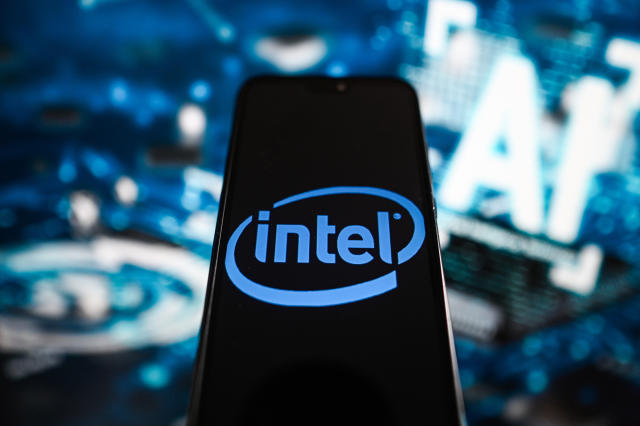Intel AI Era: A Dive into Market Dynamics

Intel AI faced a significant setback on Friday, witnessing a more than 12% decline driven by a gloomy first-quarter revenue outlook. This downturn comes as the chip giant endeavors to keep pace in the AI race while contending with a sluggish PC market.
Despite a flourishing chip sector propelled by AI advancements, Intel appears to be an exception, standing in contrast to semiconductor makers thriving on the data demands of generative AI. In 2023, these AI-focused companies emerged as top performers in the stock market.
Intel’s less-than-optimistic forecast, coupled with its position as a major PC chip supplier, cast a shadow over the entire sector. The Philadelphia SE Semiconductor Index (.SOX) experienced a 2.7% decline, marking its most substantial drop in over three weeks.
Analyst Hans Mosesmann from Rosenblatt Securities expressed concerns about Intel AI apparent absence in the AI landscape, predicting another transitional year for the company. The lack of a discernible AI growth vector raises questions about Intel’s strategic direction.
The repercussions of Intel’s challenges extended to other chipmakers, including Nvidia (NVDA.O), Advanced Micro Devices (AMD.O), Qualcomm (QCOM.O), and Micron Technology (MU.O), with shares declining between 1.3% and 2.8%.
Intel’s market value plummeted by approximately $24.9 billion, reflecting a stark contrast to the 90% surge in its shares throughout 2023. The company’s projection for the current quarter indicated a potential revenue shortfall of over $2 billion, raising concerns about its competitive standing in the AI industry.
AI Landscape Dynamics

Analyst Russ Mould from AJ Bell highlighted the risk of Intel being left behind in the AI industry, emphasizing the growing role of competitors’ chips, such as those from Nvidia and Advanced Micro Devices, in the data-intensive AI landscape.
Despite challenges, Intel’s central processing units (CPUs) frequently collaborate with Nvidia’s AI chips. Notably, a third of Intel’s server CPUs are now integrated into AI systems, even though the company has yet to establish competitiveness in the Intel AI-specific chip market.
While some analysts expressed concerns, at least 15 brokerages raised price targets for Intel AI. The median price among brokerages stands at $44, according to LSEG data. Thomas Monteiro, a senior analyst at Investing.com, emphasized that Intel still stands to benefit in the long run from its AI initiatives. He highlighted the company’s solid margins, indicating that CEO Pat Gelsinger’s plan would continue, albeit at a more measured pace.
In terms of valuation, Intel’s stock currently trades at about 28 times its 12-month forward earnings estimates, contrasting with 45.08 for AMD and nearly 30 for Nvidia, based on LSEG data. This underscores the challenges and opportunities that Intel faces in navigating the evolving landscape of AI and semiconductor technology.
Read More Intel – Tech Foom








